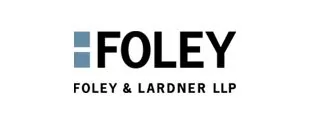Although it is well-settled that an insurer can protect its intellectual property rights in an insurance policy by obtaining a copyright, it has long been an open question as to the scope, if any, of that protection. A copyright in the form of an insurance policy does not prevent other insurers from using the insurance plan. Similarly, an insurer can include clauses similar to those in a copyrighted policy as long as the original expression is not copied wholesale. So, is there a real benefit to copyrighting an insurance policy?
The prevailing view is that "[t]o constitute infringement . . . a showing of appropriation in the exact form or substantially so of the copyrighted material should be required."1 Historically, courts have been loathe to find copyright infringement in insurance policies unless there is a striking similarity between two policies. Courts rationalize that "[a]ll the words and expressions are commonplace within the insurance field" and, thus, "what might be called a paraphrase and plagiarism in another work, is significantly different for the purposes of comparing two insurance policies."2 The United States District Court for the Northern District of Georgia, however, recently issued a summary judgment and preliminary injunction ruling in American Family Life Insurance Co. of Columbus (AFLAC) v. Assurant, Inc., No. 1:05-CV-1462-BBM, which may forever change the way insurers look at their policies in terms of copyright law.
In AFLAC, plaintiff AFLAC produced four supplemental insurance policies drafted in a "narrative" style believing that it would be easier for laypersons to digest than the traditional legalist style employed by most insurance companies. The evidence showed that it took eight to nine months for AFLAC to transform the style of existing policies into the narrative style, which were then registered with the United States Copyright Office.
The defendant apparently began looking to develop its own line of supplemental insurance policies in December 2003. Initial drafts were created in early January 2004 and filed in April 2004. Evidence indicated that, among other things, the defendant hired a former AFLAC senior vice president and risk manager to develop the supplemental policies, made a failed attempt to enter the supplemental insurance market in 2002, and copied some initial versions of the plaintiff’s draft policies verbatim.
Because copyright law protects work that is original to the author, the defendant argued that AFLAC failed to identify any original, copyrightable expression in its supplemental policies. The court rejected this argument finding that AFLAC had made many discretionary choices in drafting its supplemental policies. According to the court, AFLAC modified its old policies through devices like editorial revisions, annotations, and elaborations, creating a copyrightable interest in the new, narrative style policies. The court went even further, finding that even if AFLAC relied merely on discretionary decisions about what benefits to offer for purposes of its infringement claim, that, too, was protected by copyright law. In short, the court found that AFLAC’s supplemental, derivative work policies met the threshold for originality.
The court next rejected the defendant’s argument that AFLAC could not enforce copyrights in the new supplemental policies because AFLAC surrendered its policy language to the public domain by failing to sue other insurance companies which previously copied AFLAC’s earlier policy language, holding that even if the old policies were part of the public domain, AFLAC had a new copyright interest in the new policies. The differences between the old policies and the new policies were sufficient to establish that the new policies were protected as derivative works.
Finally, the defendant argued that the language in AFLAC’s supplemental policies was necessary to express the idea underlying that language and, thus, not copyrightable. Under the "merger doctrine," when there are so few ways of expressing an idea that the idea and its expression merge, copyright law provides no protection for the expression because the protection would be on the idea itself.3 The court found that AFLAC used language commonly found in insurance policies in sections covering definitions, limitations, and exclusions, holding these sections of the policies were not protected by the copyrights. In contrast, the narrative language benefits sections of AFLAC’s new policies did not reflect language commonly used in the industry and, thus, AFLAC could assert its rights over those portions of the policies.
In the end, the court ruled that the defendant had closely copied the narrative benefits section of two policies and granted summary judgment and a preliminary injunction in favor of AFLAC.
Although it is too early to tell if this decision marks the beginning of a reversal of the decades-long trend of the general refusal to find infringement of a copyright in an insurance policy, the case signals the opportunity for the policy writing departments of insurance companies to review their policy drafting procedures and related copyright practices.
Footnotes
1 Dorsey v. Old Surety Life Insurance Co., 98 F.2d 872, 874 (10th Cir. 1938).
2 Continental Casualty Co. v. Beardsley, 151 F. Supp. 28, 37 (S.D.N.Y. 1957), aff’d in part, 253 F.2d 702 (2d Cir.).
3 E.g., Palmer v. Braun, 287 F.3d 1325, 1330 (11th Cir. 2002).
The content of this article is intended to provide a general guide to the subject matter. Specialist advice should be sought about your specific circumstances.


